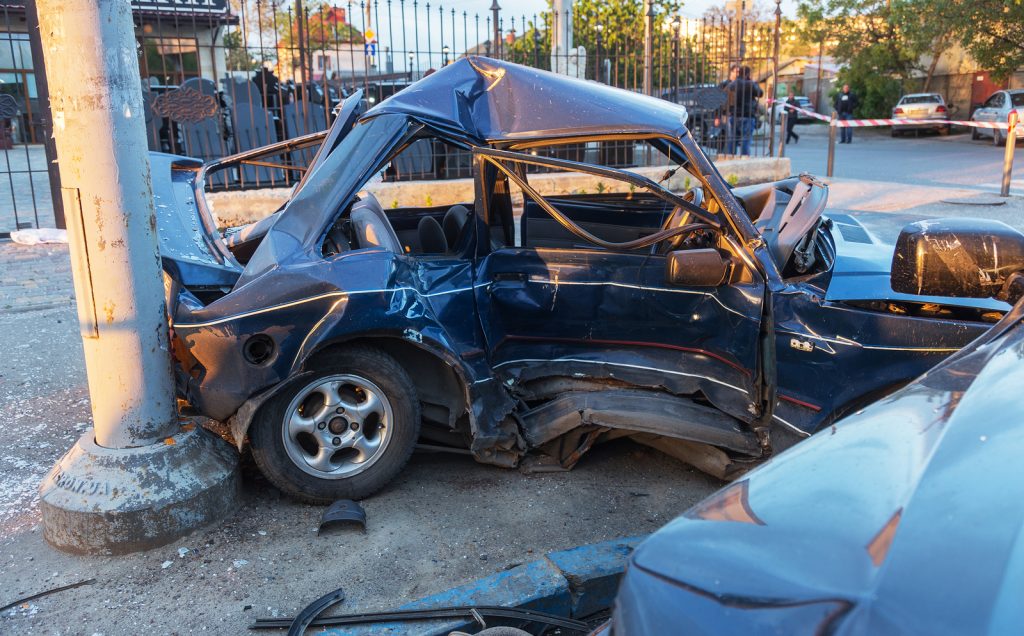What is Hypoxic Ischemic Encephalopathy (HIE)?
When a newborn’s brain has not received enough oxygen or blood, the child may suffer from hypoxic ischemic encephalopathy (HIE). If your child has been injured by HIE, the cause may have been preventable and your child may be a victim of medical malpractice. You should consult a Halifax birth injury lawyer immediately to investigate and get answers.
The brain receives the oxygen it needs from the blood flowing into the brain. Sometimes blood flow to the brain may be reduced, a medical condition called ischemia. The restriction of the blood flow results in a lack of oxygen to the brain, which is known as hypoxia. When the lack of oxygen goes on long enough it can cause encephalopathy, an injury to the brian. Taken togther a brain injury that is caused by lack of oxygen due to reduced blood flow is called Hypoxic Ischemic Encephalopathy. HIE can seriously damage the brain, heart, liver, or kidneys.
The sad fact is that, in most cases, HIE is entirely avoidable.
HIE may be caused by non-fatal drowning, strangulation, or suffocation – anything that cuts off oxygen to the brain. When a fetus or baby develops HIE during pregnancy, labour, or delivery, if medical negligence is the cause, the parents may have grounds for a medical malpractice lawsuit.
How is HIE Caused During Pregnancy or Birth?
A fetus may be deprived of oxygen if the umbilical cord gets wrapped around the fetus’s neck (a condition called nuchal cord). The umbilical cord can become compressed during contractions, resulting in a periodic reduction in blood flow (and oxygen) to the fetus. Hypoxia (oxygen deprivation) may also occur from a variety of other conditions including nuchal cord during labour or delivery, uterine rupture, compression of the umbilical cord, or breech birth.
Any one of these circumstances may be the cause of hypoxic ischemic encephalopathy. The American Academy of Pediatrics reports that the indications of potential asphyxia include a lack of fetal movement, low maternal blood pressure, and a falling or erratic fetal heart rate.
There are certain fetal heart rate patterns that can be seen on an electronic fetal heart rate monitor that are signs of fetal distress due to hypoxia. Failure to respond to these patterns in a timely manner can result in HIE causing brain injury.
HIE may be caused by medical negligence during labour, or delivery. If a medical professional does not detect the signs of fetal asphyxia or does not respond properly to such indications, that medical professional may be held liable for a child’s HIE.
Oxytocin/Pitocin Overdose Cases
Oxytocin and Pitocin are hormones that are used to induce labour and to increase the strength of uterine contractions in order to expedite or speed up labour. Remember that the umbilical cord can become compressed during contractions. If oxytocin/pitocin causes a mother’s contractions to come too fast or too strong, the fetus may not have enough time to recover between contractions. If this condition goes on long enough, the fetus may suffer an hypoxic injury.
Whenever a mother is receiving oxytocin/pitocin during labour it is important that she receive careful and continuous monitoring by the obstetric nurses and doctors so they can respond immediately to any signs of fetal distress caused by oxytocin/pitocin overdose.
What Constitutes Medical Malpractice in HIE Cases?
Medical providers at a delivery must monitor the vital signs of the fetus and mother so that signs of fetal distress – or maternal complications that cause fetal distress – can be identified and dealt with. These signs include a mother’s difficulty breathing, disproportionate pain, contractions that are too frequent and too strong and an erratic fetal heart rate.
A nurse’s failure to properly monitor the fetal heart rate or an obstetrician’s failure to order an emergency C-section may be the negligent cause of a child’s HIE. If, for example, nuchal cord is detected, but the mother’s labour has not yet reached the point where the obstetrician may untangle the umbilical cord manually, a C-section may be required.
Additionally, a C-section may be needed if a fetus is in a breech position. The failure to order an emergency C-section in these cases may make an obstetrician liable for a child’s HIE if the doctor’s action or failure to act was a proximate cause of hypoxic ischemic encephalopathy.
How Does a Lawyer Prove Medical Malpractice?
HIE can cause permanent cognitive disabilities, epilepsy, vision and hearing impairments, cerebral palsy, and sometimes death. While infant hypoxic ischemic encephalopathy is commonly a result of medical malpractice, a lawyer still must prove that a medical provider was negligent.
A lawyer proves medical malpractice in HIE cases by establishing:
- The medical “standard of care,” which is the level of skill and care that a comparably trained medical provider would reasonably have offered in a similar circumstance
- That the medical professional did not meet the medical standard of care; and
- That by failing to meet the medical standard of care, the medical professional’s negligence caused the child to develop hypoxic ischemic encephalopathy.
In HIE cases, the obstetrician may not be the only party with liability. Your birth injury lawyer will work to identify all potentially liable parties. If a clinic, nurse, anesthesiologist, or any other party providing care was negligent during a pregnancy or a delivery, that party may also have liability and may be named as a defendant in a birth injury lawsuit.
When Should Parents Contact a Medical Malpractice Lawyer?
The parent or parents of a child injured by medical malpractice during a pregnancy or delivery should be advised and represented by a Nova Scotia medical malpractice lawyer, and parents should contact that lawyer at once when they suspect their child is a medical malpractice victim.
Obstetric malpractice claims are complicated and require the lawyers to retain the assistance of a variety of medical experts. This can take time. So it is imperative that the investigation begin as soon as possible.
When a birth injury claim is successful, parents may recover compensation for the extraordinary and lifelong medical and rehabilitation costs of raising a catastrophically injured child. Parents may be able to recover funds for renovating or building a wheelchair accessible home. Parent’s may recover their lost wages for taking time off to care for their child. The injured child is entitled to compensation for their pain and suffering as well as the lost future wages they might have earned if they had not been injured due to HIE.
If an obstetrician, a nurse, another medical professional, or a hospital or clinic committed medical malpractice that caused hypoxic ischemic encephalopathy or another birth injury, bringing a medical malpractice lawsuit is a family’s right.
How Will a Birth Injury Lawyer Handle Your HIE Case?
Under the Nova Scotia Limitation of Actions Act, the deadline for parents to bring a personal injury claim is usually two years from the discovery of the injury.
But in birth injury claims the time limit for the child to bring a claim is suspended until the child reaches the age of majority (19 years in Nova Scotia). The time limit can be suspended entirely as long as the child remains disabled.
The law regarding limitations of actions is complicated and the legal requirements vary depending on the facts in each particular case. So it is important that parents get advice from a Halifax birth injury lawyer as soon as they suspect their child may have suffered an injury.
The parents of a child who has been injured due to HIE must have sound legal guidance and advice. Your Halifax birth injury lawyer will explain your child’s legal rights, discuss your options, get you answers about what happened, and suggest the best way to move forward – which may be filing a medical malpractice claim.
After reviewing the case, your lawyer will identify which parties may be liable and will determine if filing a lawsuit is your best path forward. For the parents of children with HIE, a Nova Scotia medical malpractice lawyer will provide a no-cost, no-obligation case evaluation.
Your lawyer will represent your family on a contingent fee basis, which means that your lawyer’s fee is contingent on prevailing with your claim. You will pay no lawyer’s fee unless and until your lawyer recovers your family’s compensation.
McKiggan Hebert Lawyers Will Fight for Your Family
For decades, McKiggan Hebert Lawyers has represented – and has prevailed for – parents and families who are dealing with malpractice-related birth injuries in Halifax and throughout Nova Scotia and the rest of Atlantic Canada. McKiggan Hebert has received some of the largest reported personal injury settlements in birth injury claims throughout Atlantic Canada.
Call McKiggan Hebert Lawyers immediately if:
- Your child developed HIE or suffered another birth injury due to medical malpractice.
- You’re not certain whether your child’s birth injury was caused by medical malpractice.
- Your family needs to be compensated for your child’s medical bills and related expenses.
If you proceed with a medical malpractice claim, you will pay no lawyer’s fee to McKiggan Hebert until and unless one of our lawyers recovers your family’s compensation. Schedule a case evaluation, or begin the legal process now, by calling McKiggan Hebert at 902-706-2298.













